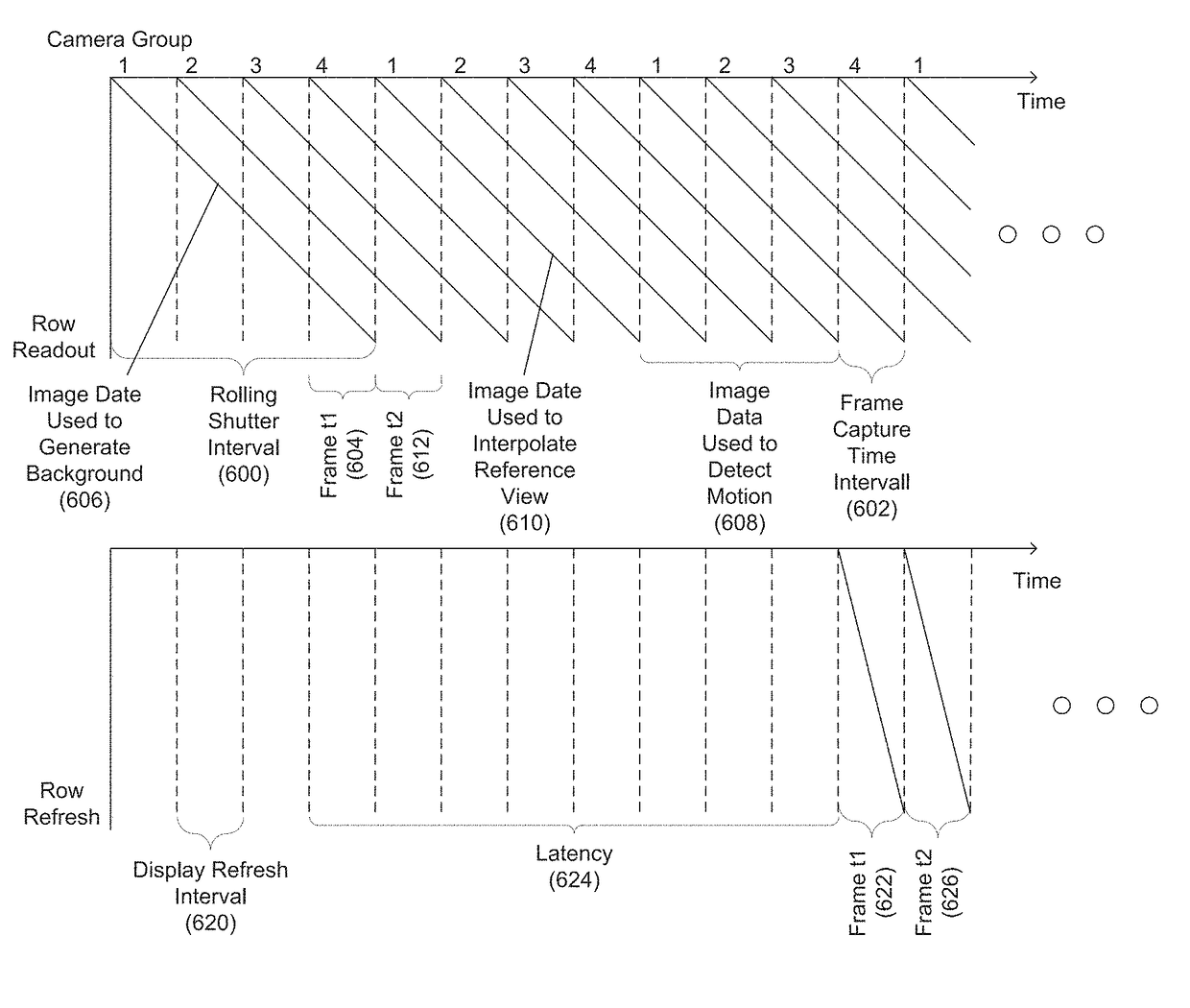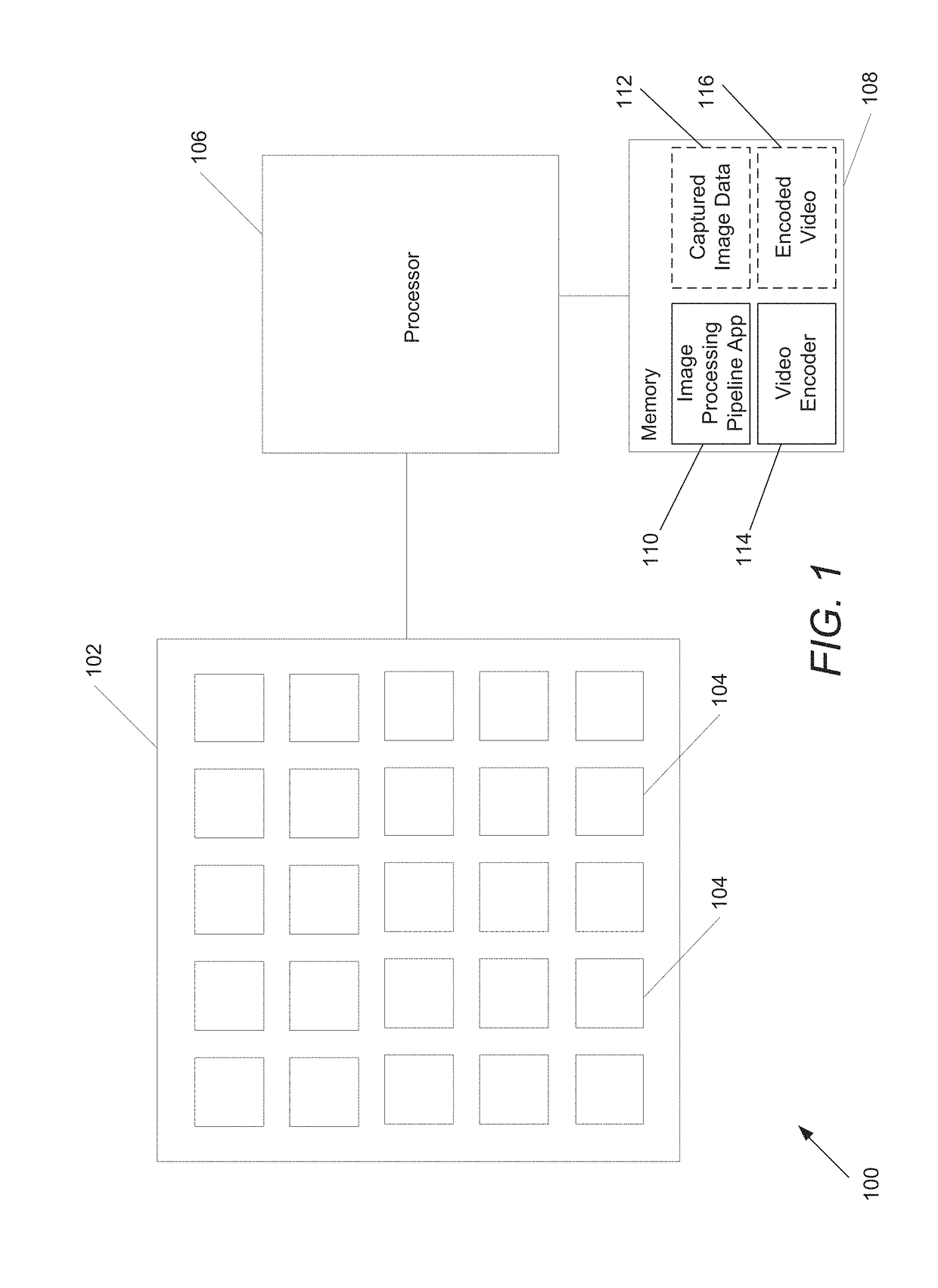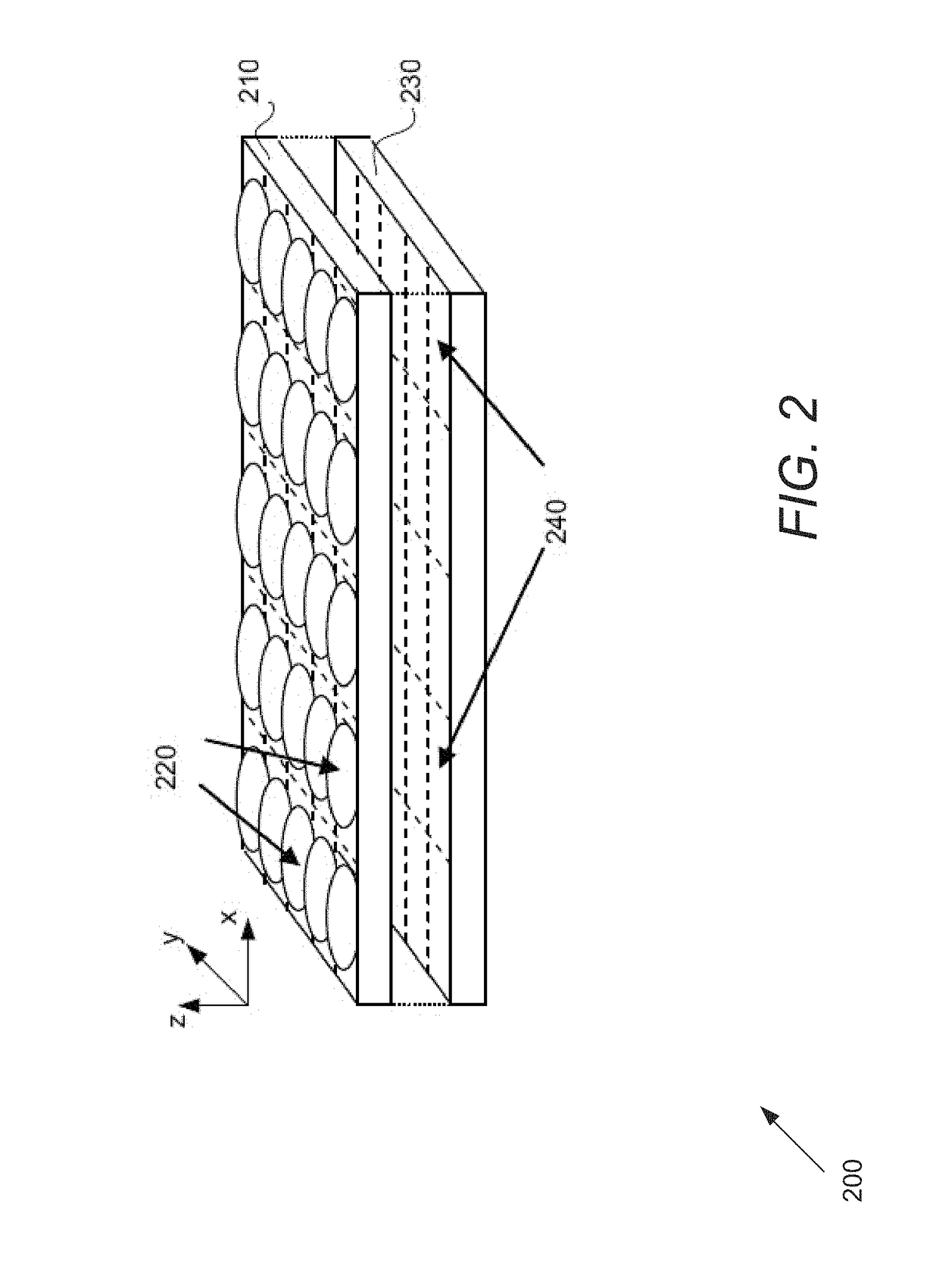Systems and methods for performing high speed video capture and depth estimation using array cameras
a technology of array cameras and video capture, applied in the field of digital cameras, can solve the problems of difficult task, fast moving object shape distortion, etc., and achieve the effect of reducing the relative rolling shutter between the cameras, reducing the difficulty of read-out, and reducing the difficulty of task
- Summary
- Abstract
- Description
- Claims
- Application Information
AI Technical Summary
Benefits of technology
Problems solved by technology
Method used
Image
Examples
Embodiment Construction
[0049]Turning now to the drawings, systems and methods for rendering high frame rate video sequences using image data captured by different groups of cameras within an array camera in accordance with an embodiment of the invention are illustrated. Video sequences typically have frame rates in the order of 24 frames per second (fps) or 30 fps. A frame rate in excess of 60 fps can be considered to be so-called “high frame rate” video. In the context of the array cameras discussed herein, high frame rate video is considered to be video in which the rate at which frames are rendered is faster than the rolling shutter speed used by the array camera when reading out data from a single camera or group of cameras within the array. By way of example, an array camera may be able to read out image data from each of four groups of cameras at the rate of 30 fps and render a high speed video sequence from the four sets of image data at 120 fps. By appropriately staggering the start times of image...
PUM
 Login to View More
Login to View More Abstract
Description
Claims
Application Information
 Login to View More
Login to View More - R&D
- Intellectual Property
- Life Sciences
- Materials
- Tech Scout
- Unparalleled Data Quality
- Higher Quality Content
- 60% Fewer Hallucinations
Browse by: Latest US Patents, China's latest patents, Technical Efficacy Thesaurus, Application Domain, Technology Topic, Popular Technical Reports.
© 2025 PatSnap. All rights reserved.Legal|Privacy policy|Modern Slavery Act Transparency Statement|Sitemap|About US| Contact US: help@patsnap.com



